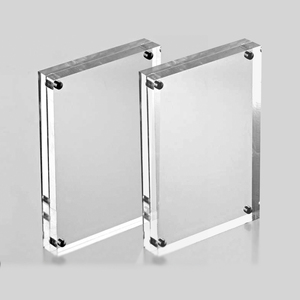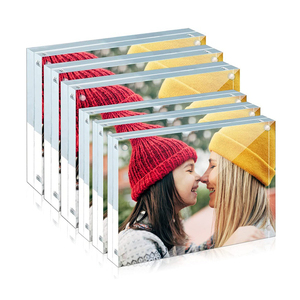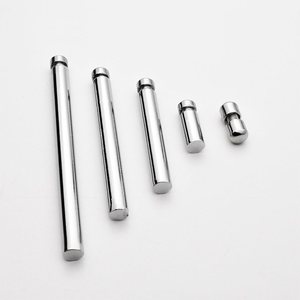(1835 products available)




















































































































































































































Acrylic frame fixing is a method of attaching or securing acrylic frames, which are often used for displaying photos, artwork, certificates, and documents. Different acrylic frame fixings are available for various applications, including wall-mounted, tabletop, and floor-standing frames. Acrylic frames are popular for their clarity, lightweight nature, and ability to protect the displayed items while providing a modern and sleek look. Below are some of the commonly used acrylic frame fixings:
Double-sided tape
Double-sided tape is among the most common acrylic frame fixings, especially for lightweight frames. The tape provides a strong adhesive bond between the frame and the surface it is mounted on. It is easy to use, cost-effective, and provides a clean look since the tape is almost invisible once applied. However, the durability of the tape may be a concern, especially for frames exposed to heat or humidity, which can weaken the adhesive over time.
Tape-on clips
Acrylic frames often use tape-on clips as a fixing to attach the artwork or photo to the acrylic panel. These clips are small and have adhesive on one side for easy attachment to the acrylic and another side for attaching to the artwork. Tape-on clips come in various sizes to fit different frame and artwork thicknesses. They are simple to use and provide a secure hold. However, the clips may be visible on the edges of the frame, which can detract from the overall presentation.
Standoffs
Standoffs are a popular choice for mounting larger acrylic frames or those displayed in public places. They are hardware pieces that create a space or stand-off between the frame and the wall, giving a three-dimensional effect. Standoffs come in various sizes and materials, including metal and plastic, and are designed to bear a lot of weight, ensuring the frame is securely mounted on the wall.
Frame hangers
Frame hangers are small metal or plastic hardware pieces attached to the back of an acrylic frame. They are used to link the frame to the hanging mechanism on the wall. Frame hangers come in different shapes and sizes to fit various frame types. They are easy to install and provide a reliable method of hanging frames.
Magnetic clips
Magnetic clips are a modern acrylic frame fixing for easy and quick artwork or photo exchange. They have magnets that create a strong hold when two magnetic clips are brought together. Magnetic clips are great for displaying items that are frequently changed, such as photos in a home or office setting. They provide a clean and contemporary look and eliminate the need for tools during installation.
Brackets
Brackets are metal or plastic pieces used as acrylic frame fixings that provide support and stability to the frame. They are usually mounted on walls or other surfaces to hold frames. Brackets come in various types, including corner brackets, shelf brackets, and picture frame brackets. They are durable and reliable, making them ideal for heavy or large acrylic frames.
Clear and Invisible
The clear acrylic frame fixings are designed to be as invisible as possible. They are usually small in size and can be clear or color-matched to the frame. These fixings provide a way to attach the frame to a wall or other surface without being visible. This way, the focus stays on the frame and what it holds, instead of on the hardware. Clear and invisible fixings are great for frames where one wants to show off the display without any distractions.
Stylish and Modern
Acrylic frame fixings have a modern and stylish design. They are often made with shiny metal materials like chrome or brushed nickel. These metals are used because they are strong and look nice. The fixings are designed to be sleek and fashionable, making them suitable for contemporary spaces. They can also be found in unique shapes and styles, adding a decorative touch to the frames. Modern metal hardware ensures that the frames are secure and adds a trendy element to the room.
Customizable and Functional
Custom frame fixing acrylic options are available for people who want things to be different or for special needs. They are made to fit the specific frame and the things inside it. These fixings are made from strong materials like aluminum or other types of acrylic. They are built to last and work well. They can be made in different colors or finishes to match the frame or the place where it will be used. Custom frame fixings are a good choice for people who want their frames to be unique and for special uses.
Easy to Use and Practical
Acrylic frame fixings are designed to be user-friendly and practical. They are often simple to install and require basic tools or no tools at all. These fixings provide a secure way to attach frames, ensuring that they stay in place and do not get damaged. The designs are made to be practical, so anyone can use them without difficulty. Easy-to-use fixings save time and effort when putting up frames, making the whole process smoother and more convenient.
Acrylic frame fixings work well in many places. They help attach acrylic frames to walls. These are some common uses:
When choosing acrylic frame fixings, there are many things to consider. These include the size and weight of what is being displayed, the surface type, and the desired aesthetic. Acrylic frames are popular for displaying photos, artwork, and certificates because they provide a clear view of the contents while protecting them from dust and UV rays. To choose the right fixing for an acrylic frame, start by assessing its size and weight.
For larger or heavier frames, consider using wall-mounted hooks or brackets designed to support their weight. The surface onto which the acrylic frame will be mounted should also be considered when selecting fixings. It is important to ensure that the chosen fixings are compatible with the surface material to guarantee a secure and long-lasting installation.
For example, if the frame is going on a concrete wall, concrete screws or wall plugs would work best. Similarly, acrylic frame fixings come in various styles that can be used to achieve different looks. For a minimalist design, look for fixings that are small and unobtrusive, like pins or clips. These fixings are easy to install and give frames a modern, sleek look. Acrylic frames need the right fixings to make them look good and protect what's inside. By considering the size and weight of the frame, the surface it will be fixed to, and the desired aesthetic, one can choose the appropriate fixing that will hold the frame securely and enhance its display.
Q1: What are the benefits of using acrylic frame fixings?
A1: Acrylic frame fixings are durable, transparent, and provide a clean and aesthetically pleasing way to secure frames. They are suitable for various applications, including securing frames in galleries, offices, and homes.
Q2: How can one ensure a strong bond with acrylic frame fixings?
A2: To ensure a strong bond with acrylic frame fixings, the surfaces to be bonded should be properly cleaned and prepared. It is also essential to choose the right type of fixing for the materials being bonded.
Q3: Can acrylic frame fixings be used outdoors?
A3: Yes, some acrylic frame fixings can be used outdoors. When using acrylic frame fixings outdoors, it is essential to choose fixings that are UV-resistant and can withstand exposure to the elements.
Q4: How does one apply acrylic adhesive with frame fixings?
A4: Acrylic adhesives are usually applied by squeezing them from the tube or using a gun for cartridges. The adhesive should be applied to one surface and pressed the two surfaces together, ensuring proper alignment.
Q5: What should be considered when choosing acrylic frame fixings?
A5: When choosing acrylic frame fixings, consider the type of materials being bonded, the environment where the fixing will be used, and the required strength of the bond.